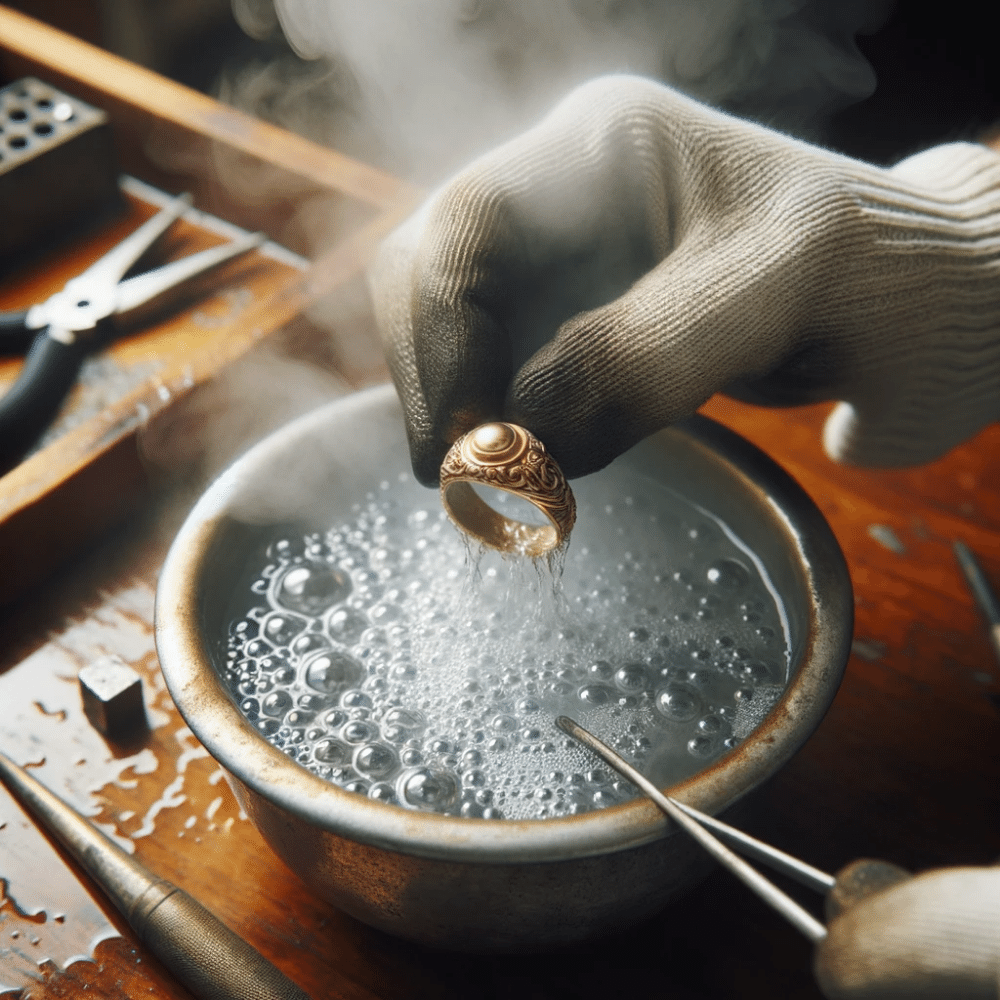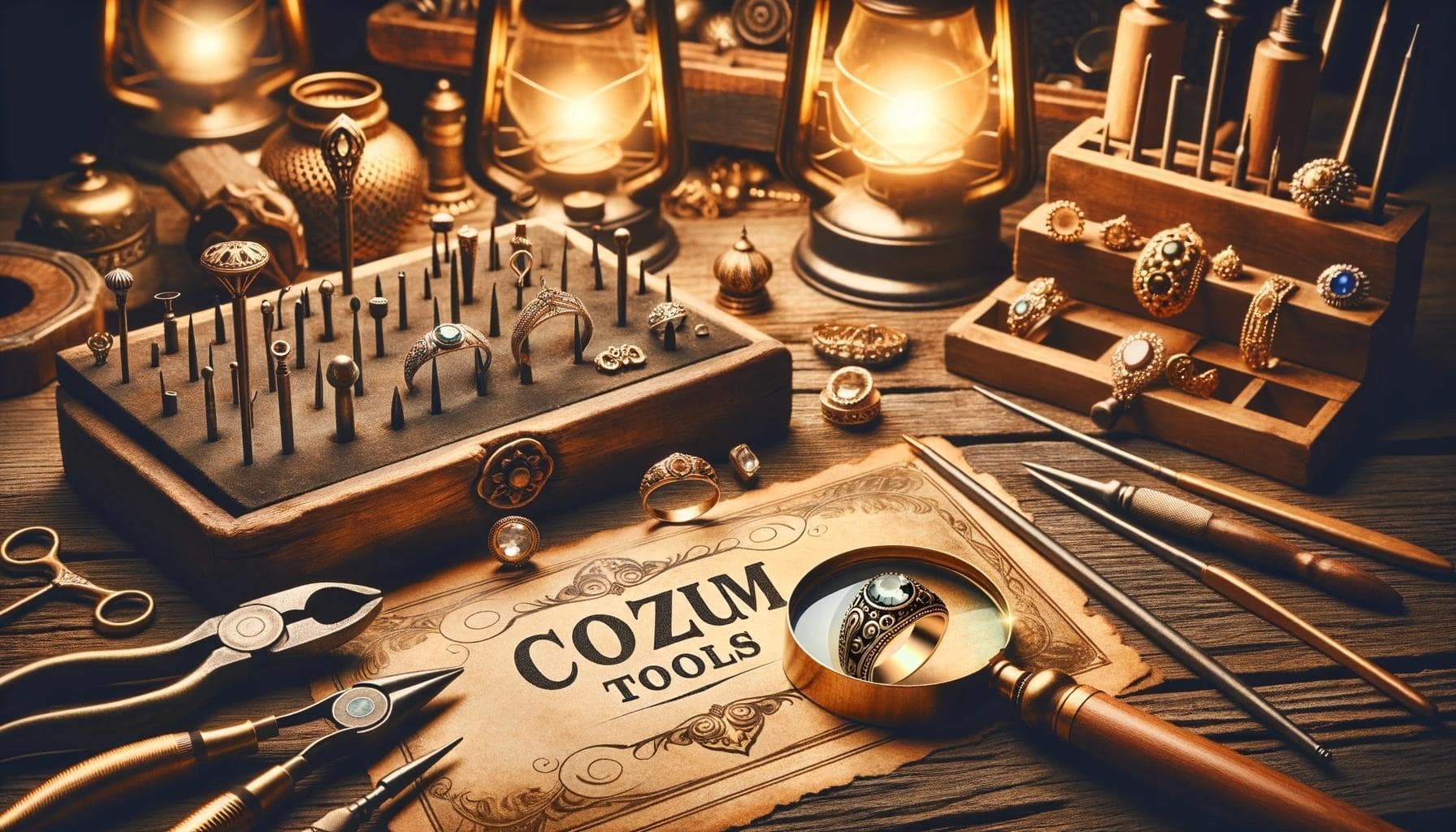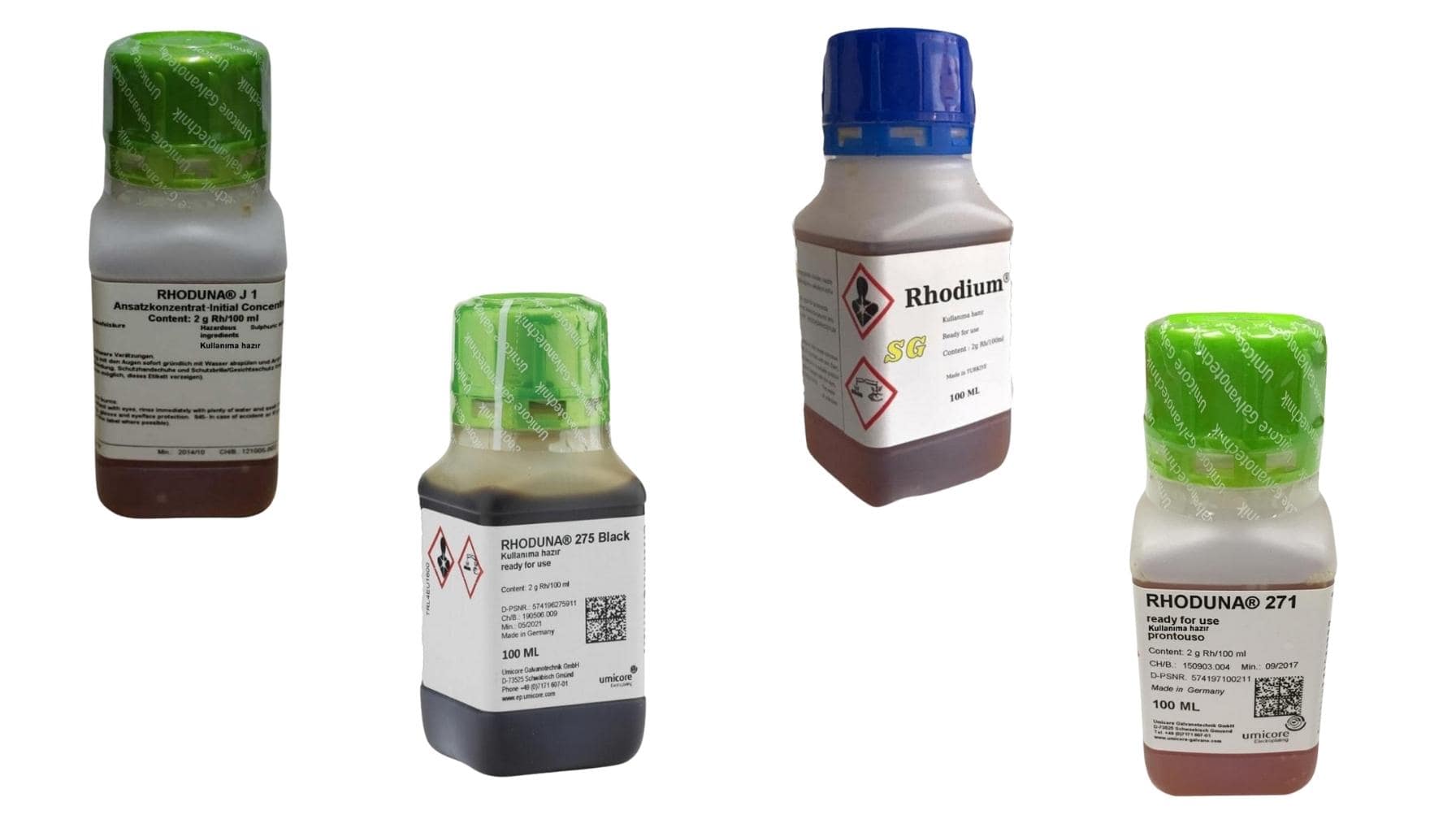
Silver Blackening Process
Silver Blackening (Oxidization) Process: Aesthetic Appearance and Durability
Silver is a precious metal used in many jewelry and items. However, over time, problems such as darkening and staining may occur in silver products, which may deteriorate their aesthetic appearance. Additionally, silver may have less durability due to its naturally soft nature.
To solve these problems silver blackout (oxidation) process is preferred. This process removes the naturally occurring tarnished and tarnished appearance of silver and also increases the durability of silver.
In this chapter, silver blackout We will give detailed information about what the (oxidation) process is, how it is carried out and its advantages.
Main Points:
- Silver blackening is a preferred process to improve the aesthetic appearance and durability of silver.
- The silver tarnishing process removes the naturally occurring tarnished and tarnished appearance of silver.
- The silver blackening process increases the durability of silver.
What is the Silver Darkening (Oxidation) Process?
Silver blackening is a process performed to increase the aesthetic appearance and durability of silver. This process also silver oxidation Also known as. The silver blackening process gives the silver a darker color and a more antique look.
silver oxidation The process accelerates the oxidation process of silver by creating a thin layer on the silver surface. In this way, the surface of silver becomes more durable and more resistant to scratches.
“The silver blackening process gives the silver a darker color and a more antique look.”
The silver tarnishing process does not change the structure of silver. It only forms a thin layer on the surface of the silver. Therefore, silver tarnishing does not reduce the value of silver and does not damage silver. On the contrary, it can increase the value of silver and make it last longer.
Silver oxidation is different from the silver plating process. Silver plating is performed to enhance the aesthetic appearance of silver by applying a thin layer to the surface of the silver.
The silver blackening process is preferred for many silver products such as silver jewelry, silver rings, silver necklaces, silver bracelets and silver earrings. It can also be used for decorative items such as silver-embroidered ornaments, silver-framed mirrors and silver serving ware.
The silver blackening process also makes silver easier to care for. Silver products require special care for cleaning. However, silver products that have been blackened require less maintenance than regular silver products. Silver products with silver blackening can be easily cleaned by wiping them with a slightly damp cloth.
What are the Benefits of Silver Darkening (Oxidation) Process?
The silver blackening process has many advantages. These are:
- It enhances the antique look of silver.
- It increases the durability of silver.
- It can increase the value of silver.
- Provides easy maintenance.
Silver blackening is a process that increases the aesthetic appearance and durability of silver. This process, which is frequently preferred for silver products, also makes maintenance of silver products easier.
How is Silver Darkening (Oxidation) Done?
Silver darkening (oxidation) is a process applied to obtain a matte appearance by reducing the shine on the surface of silver. The name of the process comes from the darkening appearance that occurs when silver comes into contact with oxygen. This process, in addition to the aesthetic appearance of silver, also increases its durability.
The process is carried out in several steps:
Step 1: Preparation
To prepare your silver for the process, you must first thoroughly clean all dirt, oil and stains from its surface. If you want to achieve a brighter blackout, you can polish the surface. For this purpose, you can use some soapy water. After thoroughly cleaning the surface, dry it thoroughly.
Step 2: Preparing Chemical Blackout Solution
You will need to prepare a chemical blackening solution for the process. For this solution, chemicals such as potassium sulfate and sodium sulfate are usually used. Mix these chemicals by adding appropriate amount of hot water and prepare the solution.
Step 3: Preparation of Silver Products
To increase the effect of the chemical solution, you can sand the surface of your silver products. This process removes the varnish and polish from the silver's surface, allowing the solution to work more effectively.
Step 4: Immersion of Silver Products in Solution
Once the solution is ready, dip your silverware into the solution. At this stage, make sure your products are completely in solution. Soak the products in the solution for approximately five to ten minutes.
Step 5: Rinse and Dry
At the final stage of the process, rinse your products with clean water and dry thoroughly. Let them dry in a dark environment. In this way, your silver will gain a tarnished appearance.
This process, called silver darkening (oxidation), reduces the shine on the surface of silver, giving it a more matte appearance. The process also increases the durability of silver. When performing this procedure, it is important to use appropriate protective equipment.
What Materials Are Used for the Silver Darkening (Oxidation) Process?
Silver blackening is a frequently used process, especially in the jewelery and jewelery industry. Some materials are required for this process. Here are the silver blackening materials:
| Materials | Explanation |
|---|---|
| silver piece | Silver piece to be silver blackened |
| oxidizer | Chemical used to darken silver |
| Box | The container in which the silver pieces will be placed with the oxidizer |
| This | Water to be used for cleaning silver pieces |
| Glove | It is recommended to use gloves for protection against chemicals |
silver blackening materials When choosing, quality and reliable brands should be preferred. Also, attention should be paid to the dosages of the ingredients. Dosages are an important factor affecting the treatment result. While incorrect dosages will not cause the silver to darken, excessive dosages may cause damage to the silver.
Silver oxidizing materials It should not be forgotten that caution should be exercised when dealing with . Since chemical substances can be dangerous, operations should be carried out by experts.
In Which Situations Is Silver Darkening (Oxidation) Process Applied?
The silver blackening (oxidizing) process is used to improve the aesthetic appearance and durability of silver. This process is generally preferred in the following cases:
- Silver jewelry and jewelry: Yellowing and dulling that occurs over time in silver jewelry and jewelry can be removed by silver blackening process. This process makes silver jewelry look like new again and durability extends its duration.
In general, silver darkening (oxidation) process can be preferred in all cases where the aesthetic appearance and durability of silver need to be increased.
What are the Advantages of Silver Darkening (Oxidation) Process?
The silver blackening (oxidation) process has many advantages as it increases the aesthetic appearance and durability of silver products. Let's examine these advantages together:
- Aesthetic look: Thanks to the silver blackening process, depths are formed on the silver, which makes silver products look more beautiful and aesthetic.
- Durability: Silver blackening process ensures longer life of silver products. Thanks to this process, scratches and damage that may occur on silver products are prevented.
- High quality: The silver blackening process improves the quality of silver products and allows them to have a higher value.
- Easy Maintenance: Products with silver blackening treatment can be cleaned more easily and practically. Thanks to this process, silver products remain clean and shiny for longer.
These advantages of the silver blackening (oxidation) process ensure that silver products look more aesthetic, last longer, are of higher quality and are easier to maintain. Therefore, many people prefer blackening of silver products.
How to Care for the Silver Darkening (Oxidation) Process?
If silver blackening (oxidation) treated products are not properly maintained, color fading and brightness loss may occur over time. Therefore, it is important to clean and protect products that have been treated with silver blackening.
Silver blackening care The following steps can be followed:
- Wipe your silver tarnished product regularly with a dry and soft cloth.
- Avoid abrasive materials and, if possible, do not expose your product to water.
- Before storing your silver blackened product, protect it from moisture and keep it away from direct sunlight.
- If your product darkens or becomes dull over time, you can get help from a professional cleaner.
The following methods can be used for silver oxidation cleaning:
- Mix a teaspoon of salt with a teaspoon of baking soda and add this mixture to hot water in a bowl. Soak your product in this mixture for 5 minutes and then rinse and dry.
- Add some aluminum foil to a bowl and pour hot water over it. Then, add a teaspoon of salt and a teaspoon of baking soda. Dip your product into this mixture and let it sit for about 5 minutes. Then rinse and dry.
Note: Never use hard materials and detergents to clean products that have been silver blackened (oxidized).
If care is not taken, color fading and loss of brightness may occur in products with silver blackening treatment. Therefore, products with silver blackening treatment must be cleaned and protected correctly.
What is the Difference Between the Silver Darkening (Oxidation) Process and Other Silver Plating Processes?
There are some differences between the silver blackening (oxidation) process and other silver plating processes. These are:
Silver Darkening (Oxidization) Process
Silver tarnishing is accomplished by oxidizing the silver surface. As a result of this process, the aesthetic appearance of silver changes and a black or gray layer forms on its surface. It is applied to give silver a more rustic appearance. This process can also be applied to certain parts of silver, allowing designers to create creative designs.
Silver Plating Process
The silver plating process is carried out by coating silver on another metal surface. As a result of this process, a shiny surface is formed on the silver coating and an appearance very similar to the real version of silver is obtained. Silver plating is generally a more expensive option and silver is less durable.
Aside from these differences, there are also similarities between the silver blackening process and the silver plating process. Both processes can improve the aesthetic appearance of silver and increase its durability.
Silver Darkening (Oxidation) Process etc. Silver Plated
| Silver Darkening (Oxidization) Process | Silver Plated | |
|---|---|---|
| Processing Time | Short | LONG |
| Price | More appropriate | Higher |
| Durability | Higher | Less |
| Aesthetic look | More Rustic | Brighter and Similar |
The differences and similarities between the silver blackening process and the silver plating process are summarized in the table above.
While the silver blackening process increases the aesthetic appearance and durability of silver, the silver plating process is a more expensive option and the durability of silver is less. Which process should be preferred depends on factors such as intended use and budget.
Why is it important to seek professional help for the Silver Darkening (Oxidation) Process?
Silver blackening (oxidization) is a process that requires expertise. Therefore, it is important to seek professional help to perform this procedure. Doing the process incorrectly may cause damage to your silver products.
An expert uses the necessary materials to perform the silver tarnishing (oxidizing) process correctly and applies the correct techniques to complete the process. Experts can also offer tips and advice for properly cleaning and protecting your products.
To achieve the best results for your silver products, it is important to consult with an expert before having the silver blackening (oxidation) process done and to have the process done by a specialist recommended to you.
Note: There are also silver products that are not suitable for the silver tarnishing (oxidation) process. An expert can determine whether your products are suitable for this process.
Conclusion
In general terms, the silver darkening (oxidation) process is a method that increases both the aesthetic appearance and durability of silver. This process is especially preferred for antique or retro-style silver jewellery, accessories and decorations and gives a suitable appearance to their designs.
The silver tarnishing process gives an appearance similar to the blackening that occurs naturally when silver comes into contact with oxygen and air. In this way, silver jewelry acquires an old and antique look and becomes more special.
However, silver tarnishing should be done professionally as incorrect practices can cause damage to the silver as well as health problems. For this reason, it is necessary to get help from an expert for the silver blackening process.
As a result, silver blackening (oxidization) is a process that makes silver jewelry and accessories more aesthetic and durable. However, to perform this procedure, professional help must be sought and proper care must be taken. Considering the advantages and usage areas of this process, the silver blackening process is a very useful method for jewelry and accessory lovers.
FAQ
What is the silver tarnishing (oxidation) process?
Silver darkening (oxidation) is a process applied to increase the aesthetic appearance and durability of silver. This process gives the silver a characteristic dark color and occasional stains, allowing the silver to have a more antique or vintage appearance.
How is silver blackening (oxidation) done?
Silver blackening (oxidation) process is done with the following steps: 1. The silver product is cleaned and dried. 2. Oxide solution is applied and spread on the silver surface. 3. Silver is kept and allowed to oxidize. 4. Oxidized silver is thoroughly cleaned and dried. 5. The process is repeated until the desired appearance is achieved. 6. Finally, the silver is coated with a protective agent.
What materials are used for the silver blackening (oxidation) process?
The following materials are generally used for the silver tarnishing (oxidation) process: - Oxide solution or oxidizing chemicals - Cleaning and drying materials - Protective agent or varnish - Cleaning brushes or cloths
In what cases is the silver tarnishing (oxidation) process applied?
The silver blackening (oxidation) process is generally preferred in the following cases: - When you want silver to gain an antique or vintage appearance - When you want to emphasize the aesthetic appearance of silver - When you want to increase the durability of silver
What are the advantages of the silver blackening (oxidation) process?
The advantages of the silver blackening (oxidation) process are as follows: - Improving the aesthetic appearance - Giving silver an antique or vintage appearance - Increasing the durability of silver - Possibility of creating a unique style and character
How to care for silver tarnishing (oxidizing)?
It is important to properly care for products that have undergone the silver tarnishing (oxidation) process. It is recommended that you follow the following guidelines when performing the process: - Use a soft brush or cloth to clean silver products. - Avoid abrasive or chemical cleaning agents when cleaning. - Store silver in a dry place and away from moisture. - Cover silver regularly with a protective agent.
What is the difference between the silver blackening (oxidizing) process and other silver plating processes?
Silver blackening (oxidation) is a process applied to obtain a dark and antique appearance using silver oxide solution or chemicals. Other silver plating processes generally apply a thin layer of metal to the surface of the silver, providing a shiny and protective coating. While silver plating processes generally preserve the original color of the silver, the blackening process completely changes the appearance of the silver.
Why is it important to seek professional help for the silver tarnishing (oxidation) process?
Silver blackening (oxidization) is a process that requires expertise. Getting professional help ensures that the right materials and techniques are used and makes it easier to achieve the desired result. Additionally, it prevents your silver from being damaged as a result of an incorrectly applied process and ensures a long-lasting result.
What is a general summary about the silver tarnishing (oxidation) process?
Silver darkening (oxidation) is a process applied to increase the aesthetic appearance and durability of silver. This process gives the silver a characteristic dark color and occasional stains, allowing the silver to have a more antique or vintage appearance. The procedure should be performed using the correct materials and techniques, and professional help is recommended.


